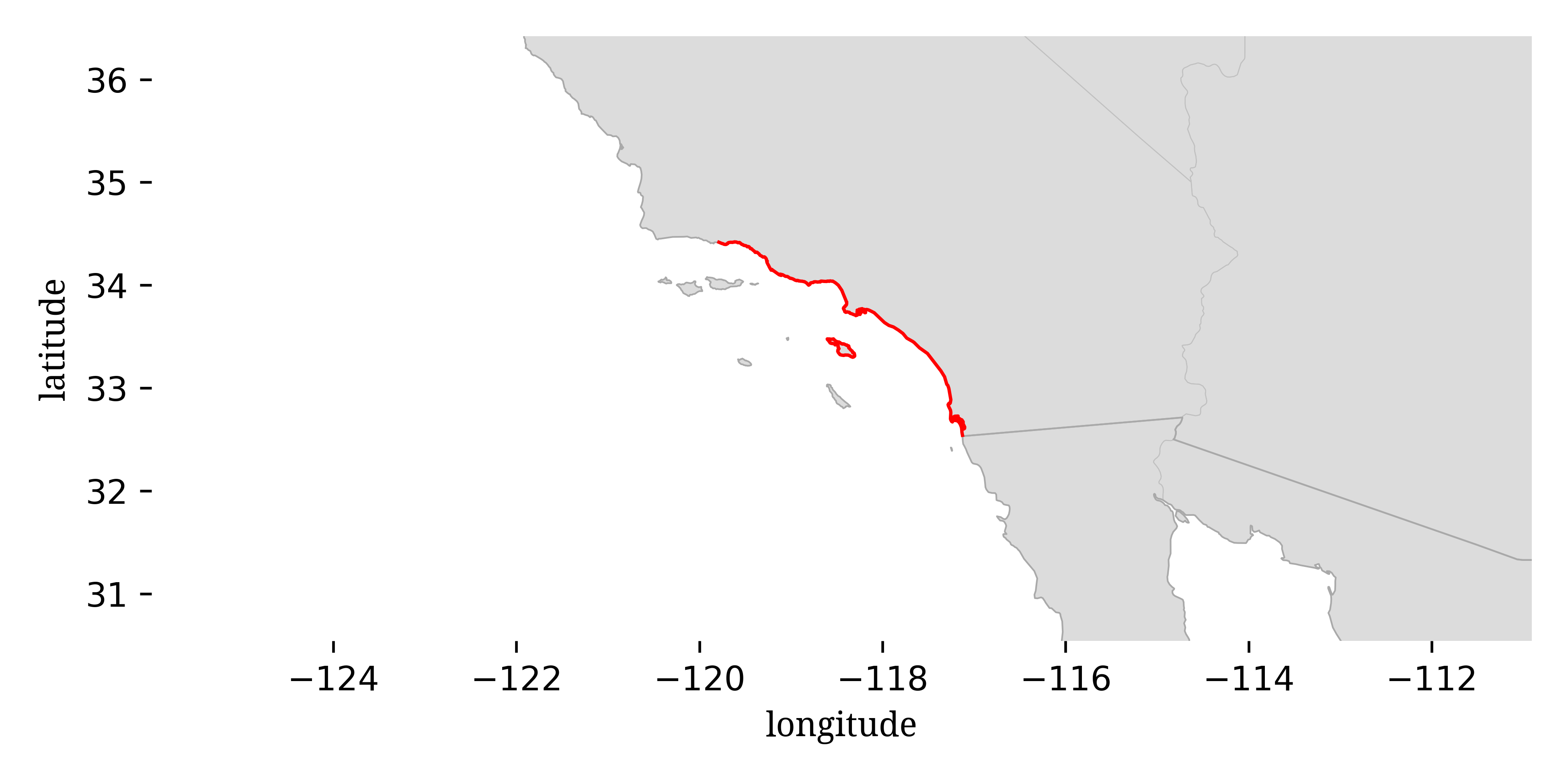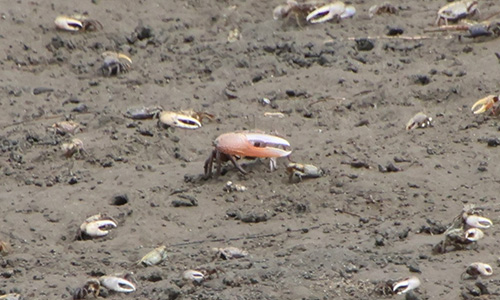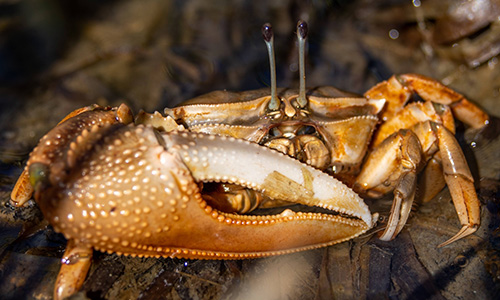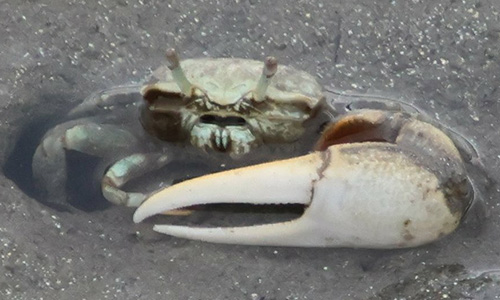
This guide is designed for identification “in the field” where you might be looking at live crabs by eye or through binoculars or from photographs. I will generally try to avoid characters that will require you to physically catch the crab, although I may mention a few for secondary verification. It does not include the more strict taxonomist-style characters that may only be visible under a microscope or via dissection. It is also assumed that the individuals are living, as death (and even capture) can cause dramatic color change.

This is a guide to the fiddler crabs of southern California in the United States. Prior to 2018, only a single species of fiddler crab was found in California. Now there are two known species:
These two species are extremely easy to tell apart, and within California they should always be readily identifiable.
The two primary features you should focus on are size and how close the eyestalks are to each other. Uca princeps is substantially larger than Leptuca crenulata, as shown in the following photos:


The larger crab in both photos is Uca princeps, while the smaller surrounding crabs are Leptuca crenulata. Leptuca crenulata generally only grows between about 10-15 mm (approx ½ inch) in width (that is the width of the carapace at the front of the crab, from corner to corner), while Uca princeps can reach 35-50 mm (approx. 1 ½ to 2 inches).
Beyond size, another key difference is the relative distance between the eyestalks. Uca princeps is what is known as a “narrow front” fiddler crab, meaning the bases of the eyestalks are close together with only a tiny bit of carapace squeezed between them. In contrast, Leptuca crenulata is what is known as a “broad front” fiddler crab, meaning the bases of the eyestalks are farther apart and there is substantial carapace between them. This difference is very striking as shown in the examples below.


While there are other features that can be used to distinguish the two species (e.g., notice the differences in claw shape in the above photos), both size and eyestalk configuration are individually adequate to identify these two species within California in the USA.
Leptuca crenulata is the more common of the two species in California and ranges as far north as Santa Barbara. Uca princeps was only first discovered in southern California in 2018, and while it appears to have permanently settled in southern California, thus far it only reaches as far north as southern Carlsbad.